First published on December 11, 2014 • Last updated on February 7, 2018
This page may contain affiliate links; if you purchase through them,
we may receive a small commission at no extra cost to you.
I woke in the middle of the night with a clear head, a calm stomach, and the desire to use the bathroom. I was so glad that nature called because outside, the clouds had cleared in the high mountain sky and I could see stars, thousands of stars, hanging just above the mountain tops behind my tent. The sky was midnight blue, the stars glinted bright white and outshone the glory of the Milky Way, high overhead. It was a good omen for the rest of our trip. I refrained from waking up my husband or my kids and headed back for more very needed sleep.
Inca Trail, Day 3
At about 5 am, I woke to the sound of rain pelting our tents. The clouds had returned and though they didn’t fill the morning sky, they threatened to make our entire day damp and unpleasant. My husband ended up with a wet sleeping bag as our tent was pitched at the end and the rain fly had not been pulled taut. The saving grace? I was back to 100%. I woke up full of energy, starving for breakfast, and ready to start hiking. It was as if the altitude sickness from the day before had never existed. It’s amazing what almost 12 hours of sleep can do.
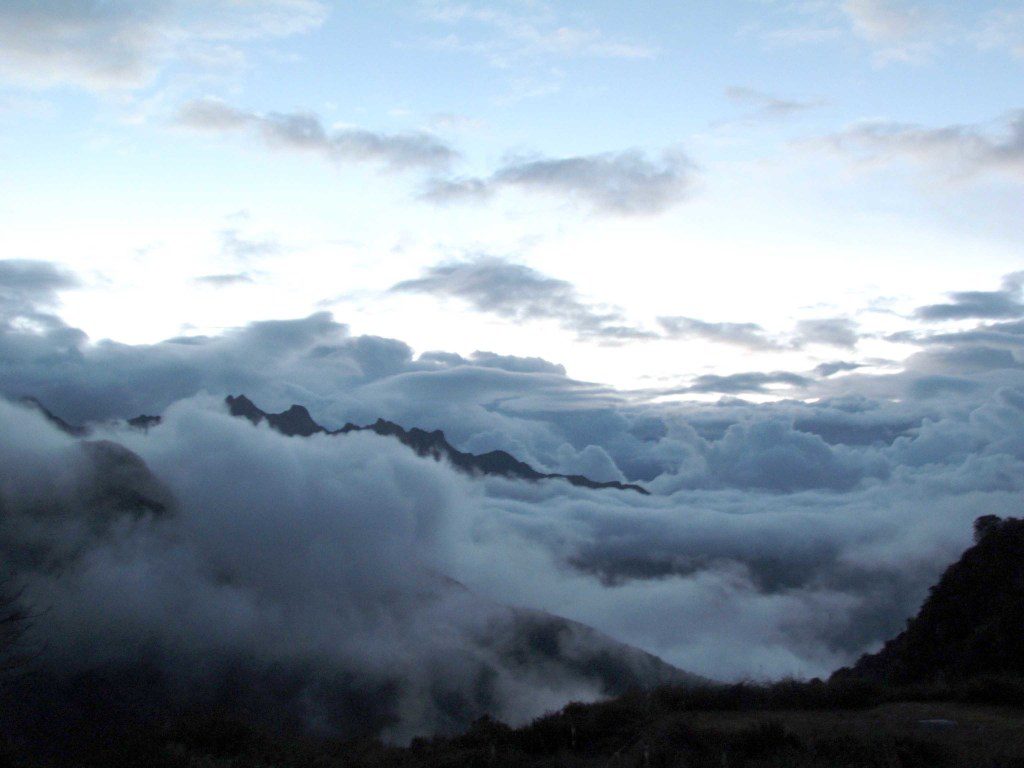
We started hiking prepared for a wet day, rain coats, rain ponchos, even garbage bags to cover our packs. I was regretting our choice not to invest in rain pants for the entire family but the quest to buy new equipment is never ending and someone has to put their foot down. Unfortunately, that someone and her family would probably now be hiking with sopping wet socks because of the lack of rain pants. If you go to Peru during the rainy season, take appropriate gear!
Ironically, our guide Fredy hiked without rain pants as well. His armor against the rain is an umbrella and cheap, plastic rain poncho that worked much better than our more expensive Argentine models. Packing an umbrella next time might not be a bad idea.
Our pictures from the morning are far and few between. Those that we did take have spots of rain or a misty perspective because the protective lens on the camera was clouded from damp and humidity. Although we started hiking up hill (it seems we always started hiking up hill!), the ascent didn’t last for very long. We soon started hiking down, then up, then down, but never with the same dramatic gains or losses of the day before.
This day’s hike would take us through two tunnels built by the Inca. The steps inside dropped quite dramatically and the water from the rains pooled in inconvenient places. Tunnels are only one example of the elaborate building skills of the Inca. Since they didn’t invent the wheel, they were unconcerned with flat roads but they did make travel easier for humans and pack animals:
To traverse the mountainous regions the Inca built long stairways and switchbacks; for lowland roads through marshes and wetlands they built causeways; crossing rivers and streams required bridges and culverts; and roads between desert oases were marked by low walls or cairns.
Architectural innovations along the trail included drainages through gutters and culverts, and in many places low walls delimited the road. In some places tunnels and retaining walls were built to allow safe navigation.
from about.com archaeology
Their exacting standards of engineering help explain why we are still able to walk on their roads today. Although some ruins and some of the trail have been rebuilt, much original work remains.
This section of the Inca Trail was spectacular. We hiked on fairly wide trail with somewhat even, large stones to serve as steps. The sub-tropical jungle crowded the trail with plants and trees. At some points, the trail dropped off very sharply. Fredy had warned us to always stand next to the mountain-side so that when the porters came running by, they would not knock us over the edge by a mistake. I had no problems following that rule. The porters literally ran down the steps and I still remember seeing their feet, clad only in slip-on sandals, slapping down on damp stone after stone, skipping steps on the way. Their speed amazed me. We learned from Fredy that the fastest time to finish the Inca Trail was set by a porter, 3 hours and 23 minutes. Of course, he was not carrying a porter’s pack that day and was running full speed but nevertheless, it is an amazing feat. Every year there is a contest to run the trail and the non-porter record is more than 5 hours. Don’t think I ever hope to participate in that race!
The morning hike passed fairly quickly and we reached the pass at Phuyupatamarka. I was hiking much better than my 5 steps at a time. Without the nausea and only some minor breathlessness to deal with, I felt like a new woman. Fredy had also convinced me to use a trekking pole. I had used them in the past in Yosemite and felt that they got in my way but for this trail, the single pole proved to help my balance and quicken my pace. A fellow hiker actually told me to slow down because I was not allowing him the time he needed to rest before I showed up around the corner. His comment put a huge smile on my face. I was tired of holding everyone back!
Unfortunately, I still wasn’t fast enough for Fredy. He asked to take my pack down the next section. We would be facing some steep downhill and he wanted me to focus on my footing and was afraid that my pack was effecting my balance. He saw that the pole was helping but I think he was afraid of another fall like the one from the day before. I reluctantly handed it over and he wore my pack on his back and his own pack on his front.
The flora and fauna at the top of the mountain was very different, back to scrub and grasses. It was still raining fairly hard so we only spent enough time to take a photo and headed on our way. The next Inca site was only a short distance and we were all anxious to take a look.
It is the Inca ruins that make this four day trek so interesting. If we wanted to see birds and animals, or flowers and insects, alone, we could have hiked a myriad of other trails in the subtropical jungle. We had chosen this hike to learn more about the ancient Inca culture and to see the structures that had survived time. The ruins at Phuyupatamarka did not disappoint.
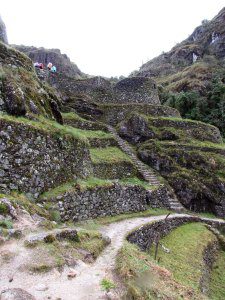
When I arrived, I could see Fredy and gang at the top of a set of stone steps, enjoying a view and learning about the site. The name Phuyupatamakra means Town at Cloud Level. It was well named! From the height of this site, we could see mountains wreathed by mist, fog, and wispy clouds.
The stone work at this site was rough, not the Classic or Imperial stonework we had seen in Cusco or that we would see later in Machu Picchu. These small stones had been laid with mortar in between their layers. The mortar allowed for moss to grow and the stones themselves were spotted by lichen. This was another site that easily blended with its surroundings. Without constant upkeep, it could disappear into the jungle altogether.
The area at the top of the site is thought to have been an open air temple to the sun. The site could have also served as a citadel – with excellent views of the surrounding area, they would have had plenty of warning of invaders. Fredy told us, however, that it was an ideal location for viewing the stars and he believed that the site was built to take advantage of cloudless nights. It seems that the Town at Cloud Level often sits just above the cloud layer. He added another interesting theory. The temple floor was pockmarked and the holes could hold water. He believed that they might serve as reflecting pools and at night they would reflect important stars in the sky.
Alongside one set of stairs were a series of fountains, almost like square wells, that filled with water from a natural spring and directed it down the mountain. The Incans held water in high regard, especially water that came directly from the earth. It is believed that these fountains served as ceremonial baths. Our path out of the ruins took us down directly next to the fountains and the steps changed color and texture. Obviously, the builders had used different stone for this area, harder stone that had been cut and polished. We had only seen this with buildings of the utmost importance and it lends credence to the idea that these baths had religious or royal importance.
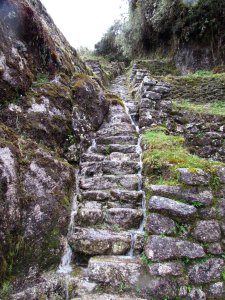 |
 |
We headed down the trail and the rain just didn’t want to let up. We were soaked pretty good. Although it wasn’t pleasant, I was still glad we came during the rainy season. The rain always tended to slow down or stop altogether at the most important times, like when we reached an Incan site to explore. It also meant that the hillsides were covered in gorgeous green grass and flowers were prolific. The clouds that brought the rain kept the temperatures down. I hate hiking in the heat and it sounds like hiking during the dry season can be sweltering, especially coming up to Dead Woman’s Pass.
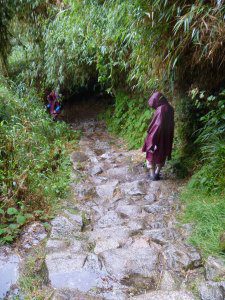
If I plan this trip again, I would come in March or April, Fall in the Southern Hemisphere or possibly in November, just before the heaviest rains are due to start. Late December was not a bad choice for us but if you hate rain or hate getting wet, this is not the time of the year to visit. January sees even more rain. For the month of February, the trail is closed, supposedly for maintenance, but it sounds like there is so much water that not much gets done.
We hiked down an almost solid staircase of steps which, according to an archived New York Times travel article, number 2,250 from Phuyupatamarka to the fork in the trail. There used to be an optional trail that went around. My guess is that it was less steep. Fredy said it is not longer in use and much of it beyond repair. Needless to say, everyone’s knees where happy for the next stop on the trail, the ruins of Intipata.
The name Intipata comes from two words in Quechua, inti which means sun and pata which means place or on top of. These ruins were discovered in the early 1990’s, fairly recent in the scheme of things. The site has only a few buildings that have been uncovered and is most famous for the terraces that drop down the mountainside at an alarming rate. A satellite view shows hundreds of terraces with the possibility of more still hidden by the jungle canopy. It is very likely that this site provided food to Machu Picchu. Although a large site itself, recent studies have shown that Machu Picchu was unlikely to have been able to support itself on the terraces that exist there. Furthermore, Fredy told us that the terraces at Machu Picchu were reserved for more stunning items than food. He told us to imagine terraces filled with blooming plants like orchids and begonias and fuchsias. Add to that, temples covered in gold and the city would have truly shone in splendor.
We hiked a curved path going through part of the jungle to reach a more central location in the middle of the ruins. You could tell this portion of the trail was less used. The porters don’t take this fork – their path is a more direct route to camp. The steps were more treacherous not because they were any steeper but because the lack of traffic meant they were covered with small sticks, patches of moss, and dead leaves. But walking this alternate trail meant that we avoided the majority of narrow steps that ran steeply down the center of the terraces of Intipata. It also meant we saw lush begonias and gently draping wild fuchsia.
 |
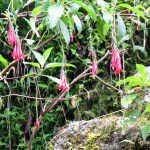 |
When we left the jungle canopy and re-entered the site, we could see a spectacular view of the surrounding mountains and the Rio Urubamba. Down below, we could also make out the shape of another Incan building. We were to learn that it was a temple to the sun.
We spent a few moments just admiring the view before walking a little further into the site. On our way, we passed a llama sitting on the side of the path. Normally, the llamas give us pretty wide berth when they are not with a shepherd. This poor fellow was injured. His right eye was swollen shut and pus dripped from the corner. Fredy said he had been bitten by a poisonous snake, common to the area and well known to the local Quechua farmers. His chances of survival were not good. It was a stark reminder to remain on the trail and to stay away from tall grass.
When we signed up for a tour to Peru, we expected to find local guides that knew at least something about their area. But we were very fortunate to have Fredy. He has a degree in Peruvian History from the University of Cusco and I learned more about the ancient Inca than I can remember much less share in a whole series of diaries. His combination of knowledge, intellect, and strength to repeatedly hike this killer trail are rare. We appreciated that he told us the common history or interpretation of it and then presented some of his own theories. Incan history is a mystery in more ways than one. No written word survives from the time period before the Spanish conquest, if any ever existed at all. The only method we know they used for recording information was a series of knotted ropes, all of which have since been destroyed, mainly by the conquering Spanish. The best information available comes from Inca Garcilaso de la Vega in his Comentarios Reales de Los Incas. He was the son of a Spanish conquistador and an Incan Princess. He learned how to read and write and documented the Inca empire after the conquest and told the history of the Inca as he understood it. Much of what we learn about the Inca comes from his book and from the suppositions made by historians like Fredy. They use not only Vega’s book but first-person narrative by the Spaniards, and from excavations of the ruins themselves.
Excavations have been extremely fruitful at Intipata. Scientists have discovered that the terraces held potatoes, sweet potatoes, corn, and possibly different types of fruit. Fredy told us that the Incans grew different types of food at different elevations taking advantage of the distinct micro-climates that exist in these mountains. The Inca studied and planned; each town was responsible for providing a different type of food to Machu Picchu. Excess crops where dried and stored in case of emergency. At many sites we visited, we saw qollcas, or storage huts for this purpose. Intipata obviously grew much more food that the inhabitants needed; the amount of residential space was small compared to the spread out agricultural space.
We also learned how important terraces were to this civilization – it is best explained by the Cusichaca Trust, an organization which undertakes interdisciplinary archaeological investigations:
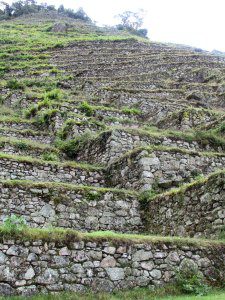 The stone walls, subtly inclined into the hillside, serve to stabilize the planting platforms. They also absorb heat from the sun during the day and release this nightly, helping to create a slightly warmer internal micro-climate which protects the crop from frosts. The construction of the typical Inca terrace includes a top layer of selected agricultural soil, sometimes brought considerable distances, above unselected, in situ soil and overlying a layer of small stones with larger stones at the base. This facilitates drainage and increases the humidity and warmth in the soil, promoting greater microbiological activity. In turn this stimulates rapid germination and plant growth and enhances yields. When irrigated, well built terraces can double the productivity of the land.
The stone walls, subtly inclined into the hillside, serve to stabilize the planting platforms. They also absorb heat from the sun during the day and release this nightly, helping to create a slightly warmer internal micro-climate which protects the crop from frosts. The construction of the typical Inca terrace includes a top layer of selected agricultural soil, sometimes brought considerable distances, above unselected, in situ soil and overlying a layer of small stones with larger stones at the base. This facilitates drainage and increases the humidity and warmth in the soil, promoting greater microbiological activity. In turn this stimulates rapid germination and plant growth and enhances yields. When irrigated, well built terraces can double the productivity of the land.
Today, much of the land still farmed in Peru uses the same system of terraces. Fredy and I spoke several times about the Quechua people and their connection to the land. Many of the porters still work plots of land that have been in their families for generations. Their lives are not easy and many of them are sending their children to school so that they can find ways to be better valued by Peruvian society; there seems to be little value in being a peasant farmer in the Sacred Valley. But Peru has a unique opportunity to save its agricultural heritage. 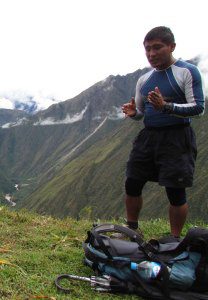
Currently, hundreds, if not thousands, of varieties of corn and of potatoes are grown across the country. As small farms are abandoned by the people looking for better lives, those crops will also be lost. Organizations are fighting to change this by better valuing the lives of those people who work the farms in the first place. And it basically comes down to education, but an education that values the teachings of the ancient Quechua as much, if not more, than the values of the outside world.
After one of Fredy’s lectures, I was always left with lots to think about. Travel is more than seeing beautiful places and taking marvelous pictures. It is about sharing time with people from different cultures and making the attempt to understand their lives. Sometimes we Americans make the assumption that our way is the best way. Well, our world can’t survive if everyone lives like Americans do. When countries like China and India improve their standard of living and their economies encourage the same kind of middle class life we already enjoy, where will all the resources come from? Our world can’t support a middle class that uses resources as freely as Americans do today. Something will have to change.

From Intipata, we could see our next camp. Here it was, not even lunch time, and we were approaching our camp for the night! Joy! A half day without hiking! To add to the celebration, the sun was coming out… we could look forward to drying out the clothes and sleeping bags that had gotten wet. Talk about luck. Even better, we were still hiking downhill, so the rest of the trek was easy on the lungs and only hard on the knees.
When we arrived in camp, the porters had already set up tents and had started to hang out things to do dry. The tents were pitched in a narrow strip of land with a cutaway hillside immediately behind and a drop off immediately in front. We had a couple of feet to spare between the tent opening and the cliff edge. The sun was shining on the majority of the space so we all threw our wet items out into the waiting sunshine and then the majority of us laid down and fell asleep. Except me. I had slept 12 hours the night before and was not wanting a nap. But my boots and socks were drying in the sun, so I couldn’t exactly explore. Silly me, I had left my sandals back home trying to limit the amount of weight I was going to carry. My barefeet weren’t up to hopping around the muddy paths of camp, so I sat tight, grabbed my binoculars (which, by the way, weigh more than my sandals), and tried to spot the birds I could hear singing in the trees.
The view from our campsite was beautiful – green, jungle covered mountains layered one behind the other each with their own halo of white, puffy clouds. But the most stunning feature kept coming and going, fleeting, like the ethereal cloud cover in the high mountains, a rainbow! The first I saw was actually hanging over our tents as we arrived and I was so excited. I announced to all of our porters, ¡Mira, un arco iris!, Look a rainbow! A few of them briefly looked at me but most just went about the business of putting camp together. I thought that it was shame they couldn’t or wouldn’t take a few minutes to enjoy this rare sight. Then, a little bit later, we saw another. And then another. And it slowly dawned on me that rainbows are not so rare in this special spot. The vantage point of the high mountains overlooking a river valley filled with mist from the rains and clouds makes for perfect rainbow formation and perfect rainbow viewing. Later in the day, while exploring a nearby Inca site, Fredy introduced us to a Temple of the Rainbow and it made perfect sense. What else would the Inca build in this precise location?
The sun is fleeting, however, at this time of the year and by mid-afternoon the clouds started to build yet again. Fredy came to wake up the tired hikers in order to take us to another set of ruins, Wiñaywayna, that were only a few minutes away. He was afraid that if we waited any longer, we would end up soaking wet. Groggy and not so happy, my boys put on their almost dry socks and their near dry boots and we headed down the trail. We passed a gateway that is locked at sunset to prevent hikers from exploring the site at night time. We walked through a short stretch of sub-tropical jungle and exited to a wide expanse of open space filled with terraces and walls and ancient buildings, all with a backdrop of dark green jungle and a skinny set of waterfalls. The gray stone was striking against the shortly cropped green grass.
This is the first Inca a site we got to explore without a guide. Before he left us to our own devices, Fredy wanted to give us some background information. The name Wiñaywayna (also Huynay Huayna and Wiñay Wayna) comes from a local orchid that is hot pink in color and comes with multiple thin flowers on a single stem. From a distance, it might remind you of some kind of phlox or even Alaskan Fireweed. The name in English means forever young.
He explained that Wiñaywayna had been a town of agricultural importance. The many terraces support that theory! Along with Intipata and Phuyupatamarka, this town probably helped provide food to Machu Picchu. Like the other locations, it would have grown food unique to its microclimate but would have likely included some types of potatos and corn.

Many buildings that would have been homes still remain, their pitched roofs and small dark windows repeatedly drew my gaze. It is amazing how different a ruin begins to feel when the buildings are reminiscent of our own spaces. These homes would have had thatched roofs and look like many that could have been built in medieval Europe. I was reminded of old villages I had seen in Italy. The connections between Europe and South America seemed like they should have come much earlier than the Spanish Conquest. The people of both continents were building similar types of buildings at exactly the same point in history with no contact whatsoever.

At the top of the site, there was a beautiful wall to a temple with 7 open windows, each the same size and shaped like a tall trapezoid, narrow at the top, wide at the bottom, and very symmetrical. Historians debate the origins of this temple but Fredy presented us a theory that made such logical sense, I couldn’t disagree. Remember those rainbows I mentioned before? Fredy believes the 7 windows correspond with each of the seven colors of the rainbow. The door of the temple faces the exact spot where the rainbows had been repeatedly forming all afternoon. Rainbows are important in Incan Mythology – it is believed that the first Inca ruler, Manoc Cápac, used a banner with the colors of the rainbow. The rainbow is also a deity, Kuychi, and is linked to fertility. The ancient Inca also believed that rainbows were a type of serpent with two heads, beginning and ending in natural springs. Furthermore, rainbows are to be feared or held in great regard, depending on your point of view, which might help explain why the porters were less than interested in noticing the rainbow I was so excited about earlier in the day. They still hold strong ties to the religion of their ancestors. Here is a great description from the online Inca Glossary:
After a rainbow stretches across the sky, it does not always remain and can move willfully along the earth for many reasons, most of them malevolent: in order to steal from men or to enter the abdomen of women through the vagina causing severe pain. Rainbows that arise from subterranean waters cause intense pains of the stomach and head, vomiting and sickness in general. Both sexes are prohibited from urinating in the presence of a rainbow because that can cause it to move and enter the person via the urine, causing severe stomach pain. They are the manifestation, in reptilian form, of the forces of procreation and fecundity which lie within the earth.
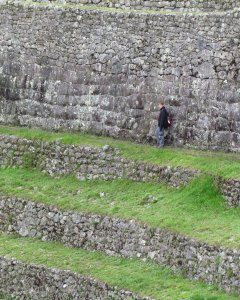
After presenting his information, Fredy went back to camp and gave us a chance to wander on our own. It was lovely. Finally, we had the opportunity to take our time and walk around the ancient walls, to enter small rooms and investigate the niches and the nooks and crannies. There is something special about entering a doorway and stepping into a small room that might have served as a family’s home. You can imagine a bed in the corner on the floor or a niche filled with practical items for daily living. The room might have had blankets but no furniture – the Incans hadn’t invented tables or chairs or bedsteads. I always imagine how dark many of these spaces would have been. A thatched roof works well to keep out rain but also allows for no light and the windows, if any, would have been small. I imagine much of daily life was actually spent outdoors, working in the terraces or caring for the animals.
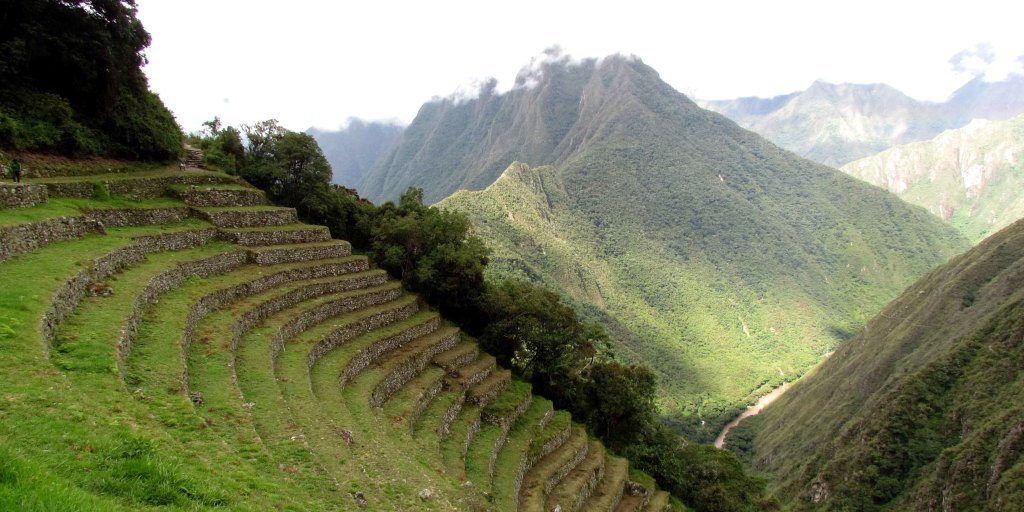
The majority of the ruins had little moss and few plants growing on the walls – there was some but it had obviously been cleared at some point in time and was just now growing back, especially on those ruins backed up into the jungle. We learned that unless the park staff work almost constantly, the jungle would take back these ruins very quickly. The llamas do a lot of the heavy lifting by eating the grass and plants on all the terrace levels. But the greenery that grows in cracks and a top walls needs to be cleared regularly, the soil scraped away with tools so that the plants are slow to return.
In the damp corners where the moss was growing back, we found some of our most surprising finds of the day. The damp stone makes a perfect habitat for creatures like snails and insects that like dark places. I found a single piece of litter that I went to pick up, an old plastic soda bottle sitting in a niche that looked sadly out of place. To my surprise, the bottle was a home for a pale gold and black grasshopper who refused to let go. We decided that if he loved his plastic abode so much, it would be better if I just put it back!
 |
 |
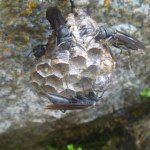 |
 |
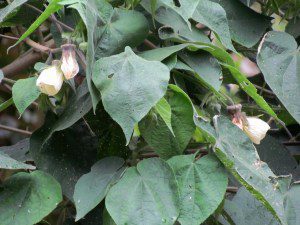
The best siting of the day happened for only one of us, my youngest son, and it was so quick and so sudden that he only saw a body and a tail running across the trail as he headed back to camp. We were just behind him, either photographing some strange mushroom we had found or watching a hummingbird play hide-and-seek among the foliage. The animal was definitely a mammal. When we got back to camp, he sat down at the table to draw what he had seen. I don’t know which amazed me more, the quick and agile drawing of a thirteen year old who remembered details of the auburn red fur with black markings on the tail, paws and mane or the two porters who sat with us at the table and were watching my son draw with wide open eyes and intent stares. From the drawing, Fredy was able to identify a type of fox – when we came home and looked him up, this is the animal that comes closest to what he saw, a maned wolf. As of 2004, the wolf is on the near threatened list and sounds like he is a rare site in Peru.
 |
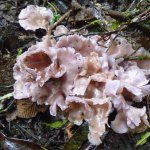 |
The rest of the afternoon passed pleasantly. My youngest and I sat in the dining tent while it lightly rained outside and while he drew, I spoke to two of the porters. We learned that they both had children and were using the money from the trail to send them to school in Cusco. They both worked in small villages on their small plots of land growing potatoes and corn. We found out that they work 4 trips a month of 4 days each, so a total of 12 days work in a month. Our conversation was all in Spanish and sometimes they had a hard time understanding me – my accent is very Argentine and I sometimes would forget not to slur my double ll’s or would use vocabulary unique to Argentina. Their first language is Quechua, not Spanish, and they use it while speaking with each other and with Fredy. But, overall, we managed to share a lot of information. I even told them a little about our own family.
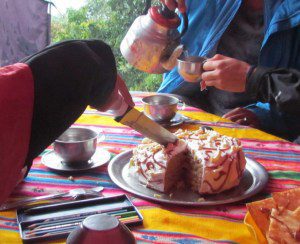
We were surprised that afternoon by a huge tea time. Not only did we have our normal snack with tea but our chef had made a layer cake, complete with filling and topping and artfully decorated. My boys attacked it like they had never seen cake before… but only after they could pry it out of the hands of our Danish friend. He said he was hungry enough to eat it all himself!
Later that night, when dinner was served, we were treated to even more great food. I was finally hungry… all my hiking and lack of eating had finally caught up with me and the lower altitude meant that my stomach was happy to see food. What a great night for it! We had shish-ka-bobs with all our left over meats – a little chicken, a little beef, some hot dogs, and vegetables, all served on bed of noodles. If that wasn’t enough, we could eat spaghetti as well. And potatoes… we always had potatoes but tonight they were my favorite, sweet potatoes! Remember, this followed a starter and a soup, served with the ever present criolla, a condiment similar to the pico de gallo of Mexico and just as spicy. This was certainly not your average backpacking trip!
After we could eat no more, Fredy took introduced us to our porters. This ceremony should have taken place on the first night, but my slowness on the trail meant that everyone was tired and worn out and it left little time for the politeness of introductions. I still regret that we didn’t get to know more about each individual sooner in the trip. All of the porters filed into the tent opening and the 13 of us looked at each other and then at Fredy. He spoke to all of us, first in Quechua and then in English, and told us the story of each person who had accompanied us up the trail and carried all of these supplies that made our trip luxurious for a camping trip. Most of our porters were men and, like the two I had spoke with in the afternoon, they used the money earned on these trips to help send children to school. But one older man was near 70 and he was on the trip with his daughter, who happened to be our chef and the only female porter on the Inca Trail.
After Fredy finished with our porter introductions, it was our turn to introduce ourselves. We also thanked our porters for their hardwork. Since my family speaks Spanish, we spoke to them in that language. We wanted to make the exchange as personal as possible. I explained to them how important it was for my children to learn more about South America and how our visit to their home was an opportunity for us to see their beautiful country. I thanked them for their support because without it, I would not have managed. There was no way that I would have been setting up tents or cooking food with the altitude sickness that I suffered. My oldest son spoke for both himself and his younger brother and described their joy of hiking this beautiful trail and of sharing time with people from a different culture. He thanked them from the bottom of his heart for the trip of a lifetime. At the end of this, my husband gave the head porter the tip that the six hikers had chipped in on. It felt like a small thing to do for the amount of work these men and one woman had accomplished for our benefit.
The video below gives a good idea of what the trail is like for porters. Although we never saw the heaviest of heaviest that some of these porters are carrying, I wouldn’t be surprised to find out it still happens. If you decide to hike the Inca Trail, please ask if your company helps with the rights and benefits of porters.
I still wonder what those porters really think of us… are we the crazy white people that come from far away to kill ourselves hiking on a trail that they can hike in half of the time? Are they grateful for the money we bring or are they resentful of the negative impacts we are having on their national park? Without speaking Quechua, I am not sure I could ever really know. And I certainly could never learn as a tourist alone. It is a conversation to be had when there is trust between people and trust takes time to develop – we can’t manage that in four days on the trail.
After our ceremony, it was time for bed, porters and all. We would all be up well before the crack of dawn to make our final leg to Machu Picchu!
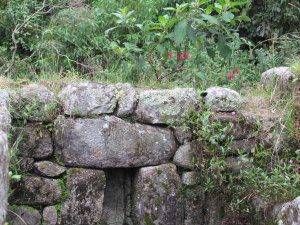
We started our day at Camp Chaquiqocha at 12,033 feet and ended at Camp Wiñaywayna with an elevation of 8,829 feet. After all the ups and downs (mainly downs), our day’s hiking lost us a total of 3,204 feet in elevation. We had hiked only 10 kilometers or about 6 miles.
In total, from day one, we were back at about our starting elevation and had hiked a total of 21 miles.
Next day, Machu Picchu!
Three years ago, my family was living in Buenos Aires, Argentina. We took the time to travel and managed to see a good part of Argentina, Uruguay, Peru, and Bolivia. This is one post of many from that time period that originally appeared at Daily Kos. FYI – a diary is the same as a blog post in that forum.


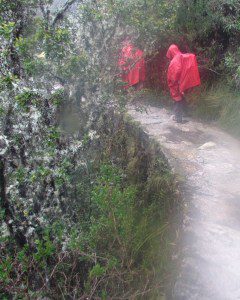
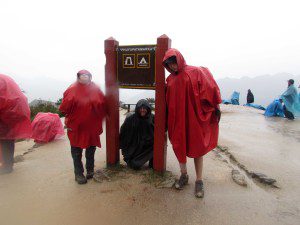
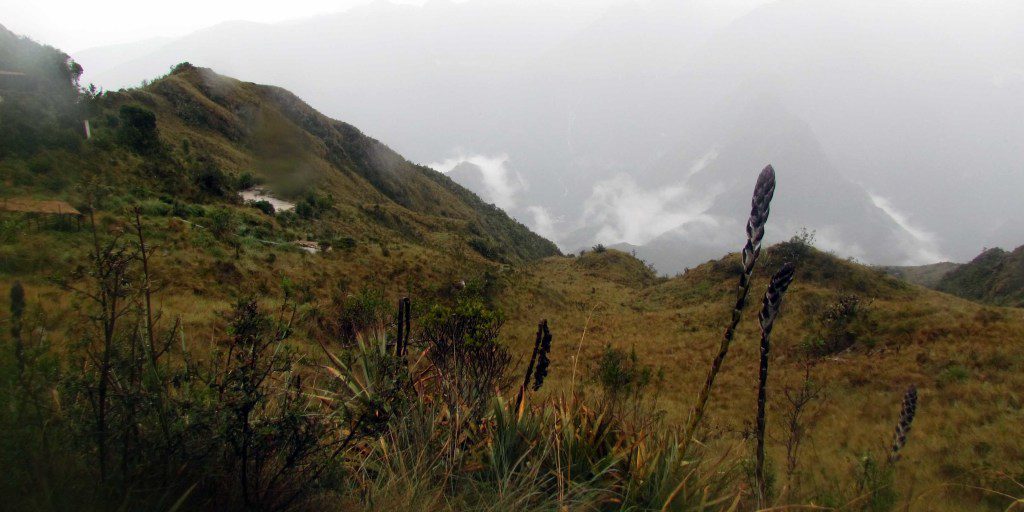
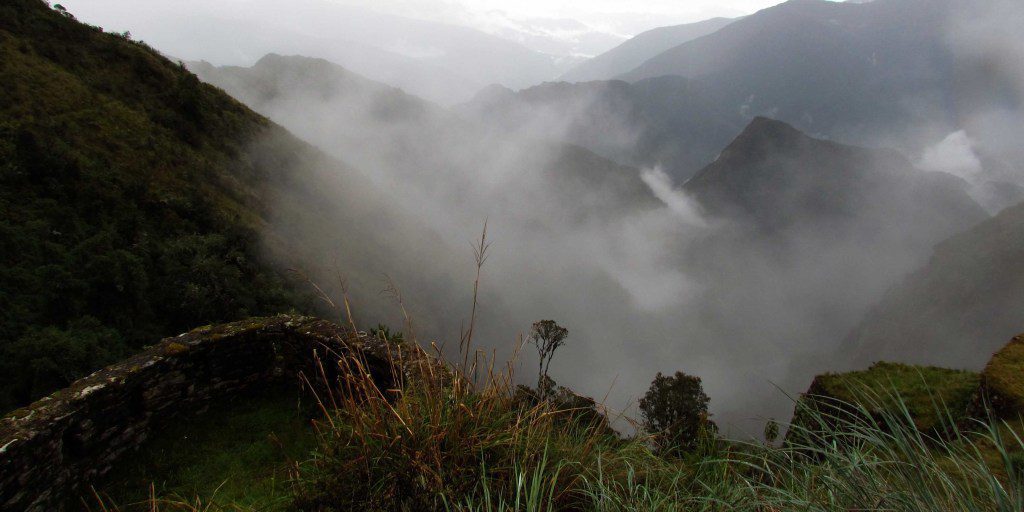
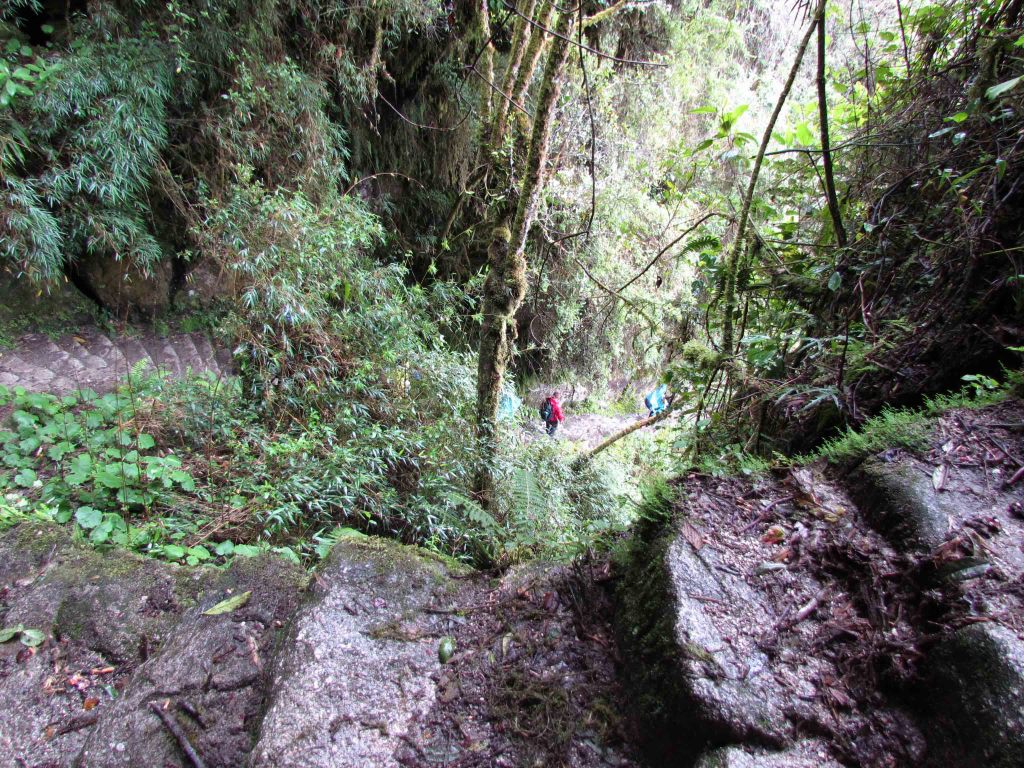

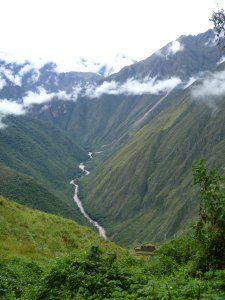
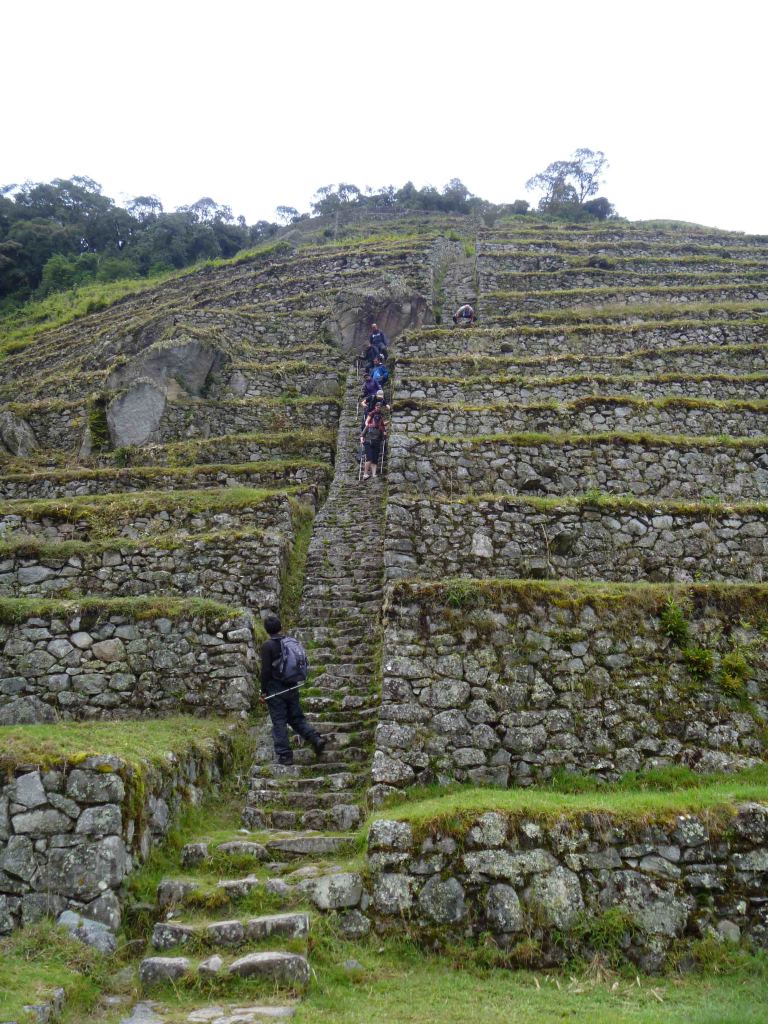
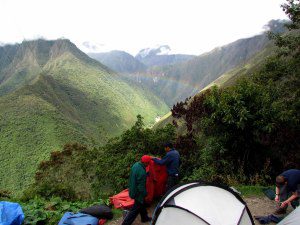

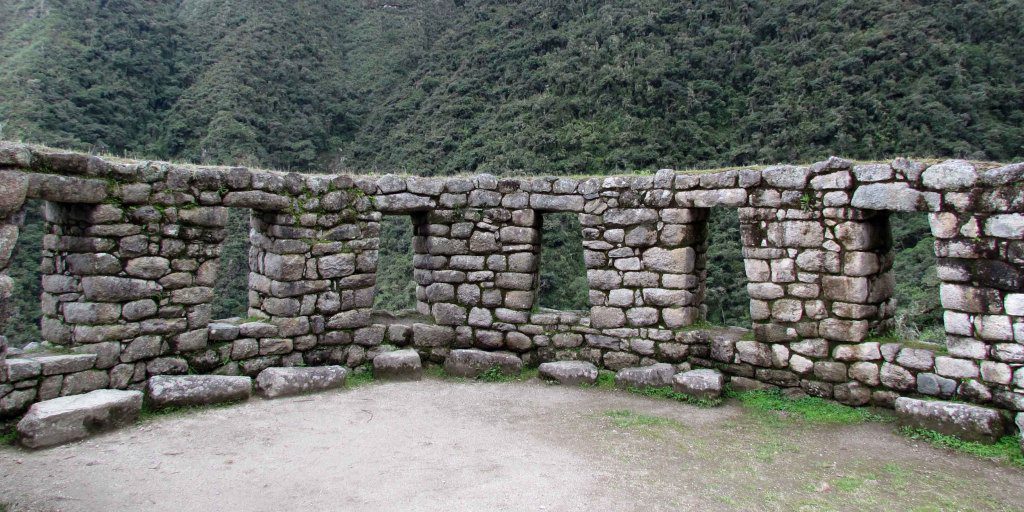
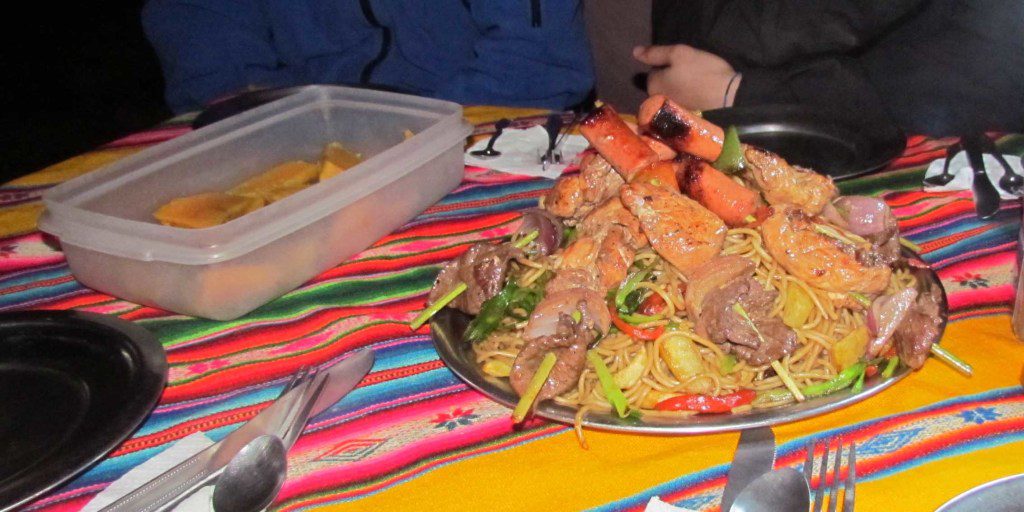

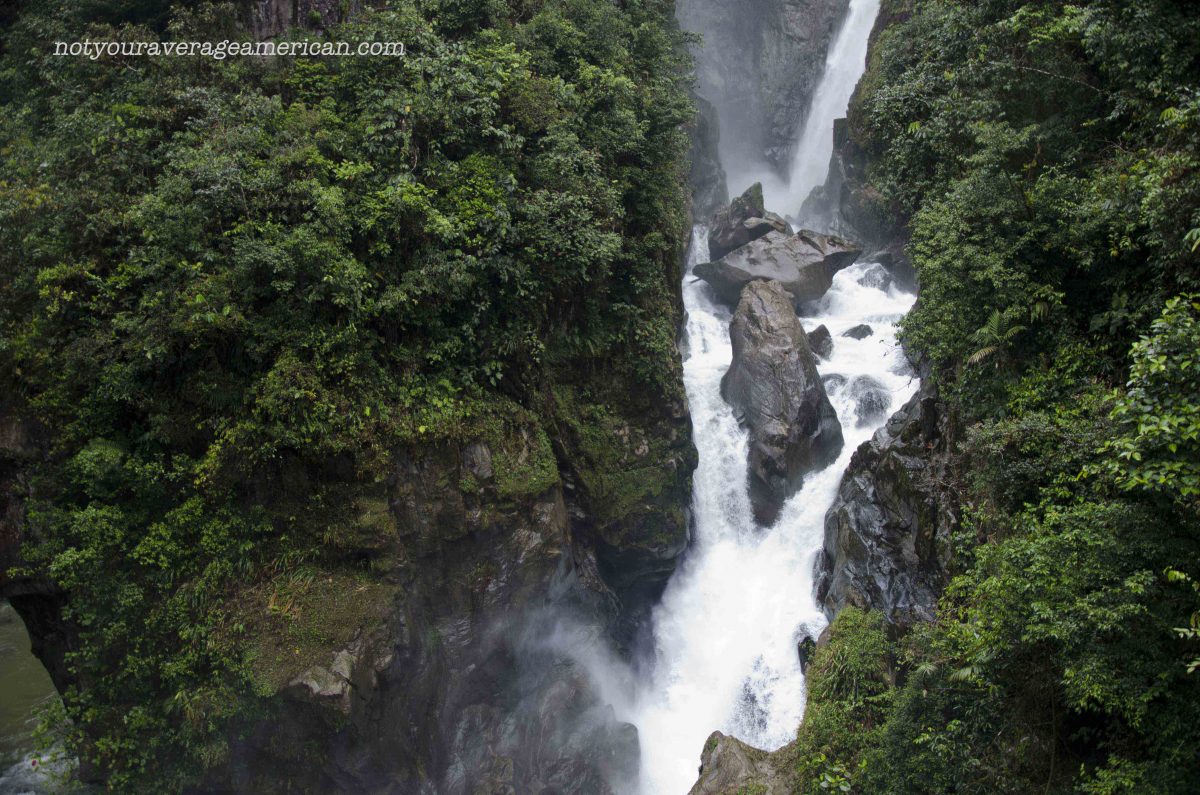
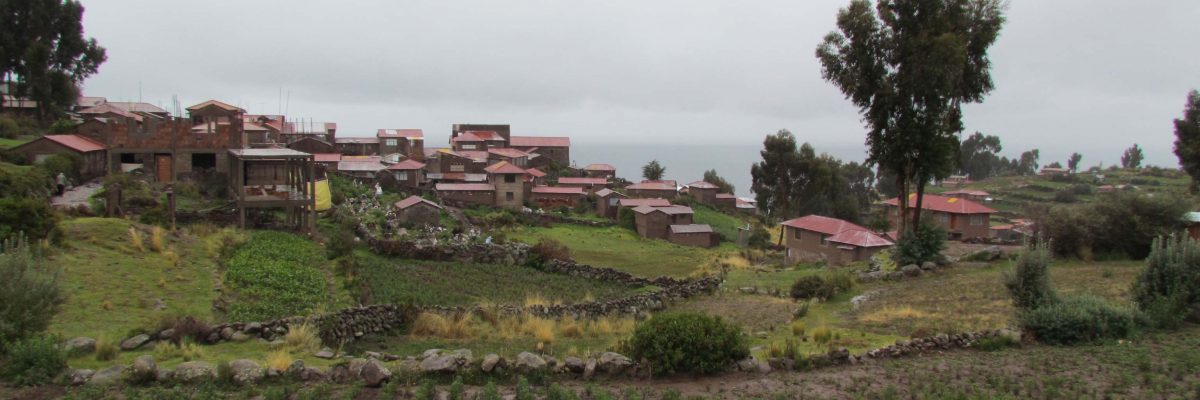
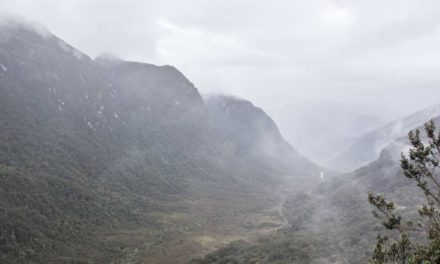

















I’m sure y’all have been to the end or the Inca Road near Cusco. Rainy day for us also, but the precision of the stone cutters is nothing short of increable!
Too true, Joe. It is a very special place. We are looking forward to visiting Incan ruins here in Ecuador as well. Did you get the chance to see any while here?